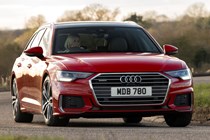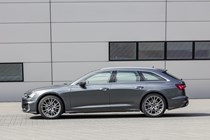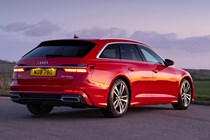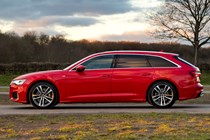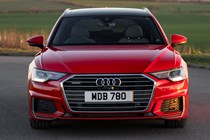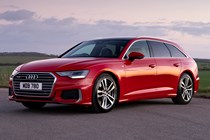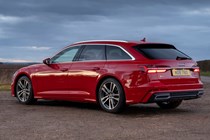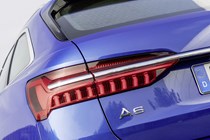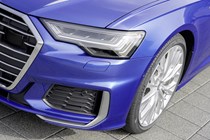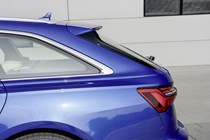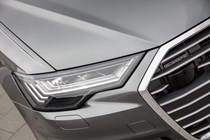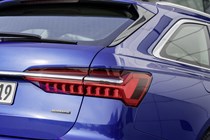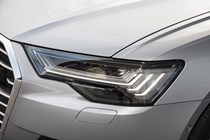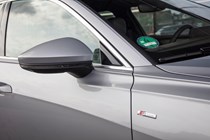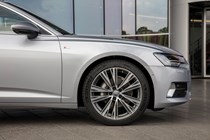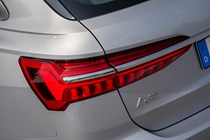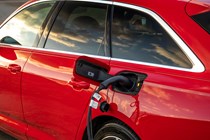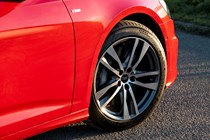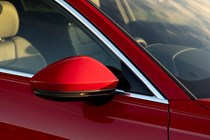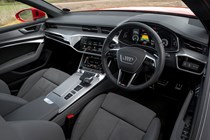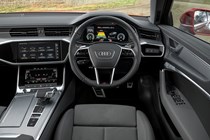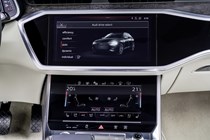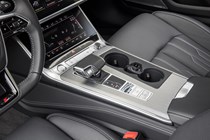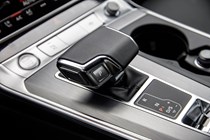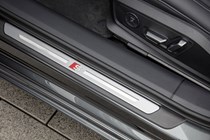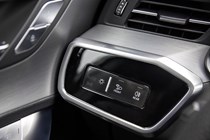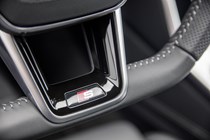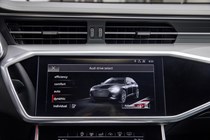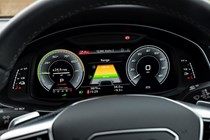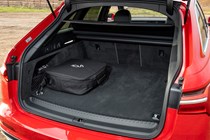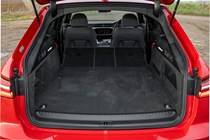Audi A6 Avant engines, drive and performance
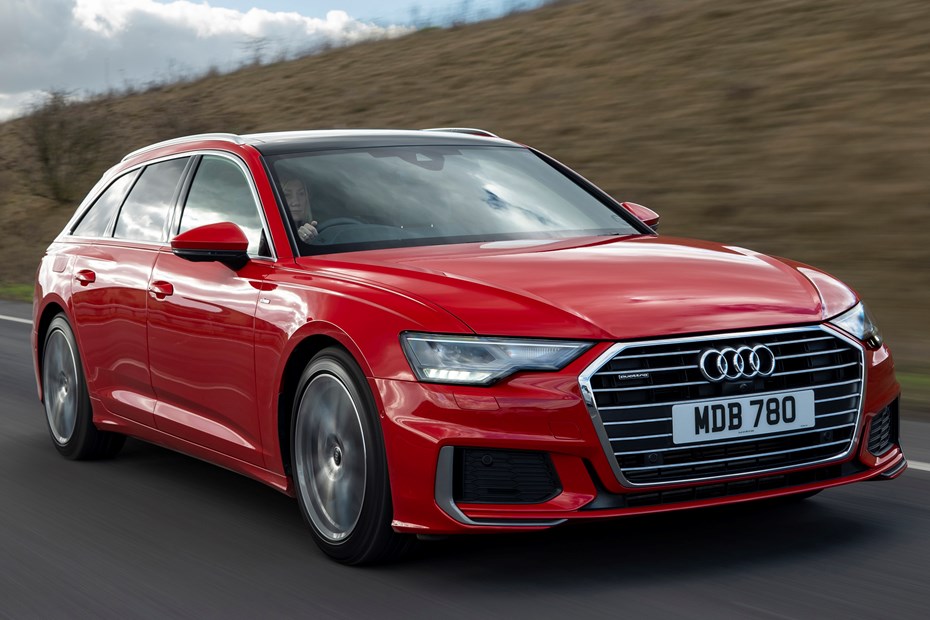
- Three engines to choose from
- Two petrols, one diesel
- All automatic, Quattro available
Petrol engines
The petrol engine range starts with the 40 TFSI. It’s a 2.0-litre four cylinder unit making 201hp and it’s fine for leisurely driving, but for the true exec experience we recommend taking the next step up. That comes in the form of the 45 TFSI, which uses the same engine, but it produces 245hp.
This comes with all-wheel drive and takes 6.0-seconds to complete the 0-62mph acceleration benchmark, whereas the 40 TFSI’s time is more than seven seconds. Both of these models come with a seven-speed automatic gearbox which can be used manually via paddles behind the wheel.
Diesel engine
There’s only one diesel on offer – the 40 TDI. It uses a 204hp 2.0-litre engine, which is mated to a seven-speed dual-clutch automatic and is only available with Quattro all-wheel drive. This is our choice of the line-up with more than enough power for most drivers.
It’s quiet and refined on the move and the mild-hybrid system allows the A6 to coast between 34 and 99mph (when the accelerator isn’t being pressed) for that extra bit of fuel-saving. It’s relaxed, refined (well, quiet) and delivers a 500-plus mile fuel range for those who do lots of long-distance driving.
Plug-in hybrid engine
If you want to be even more environmentally friendly (as well as tax efficient) then there’s the 50 TFSIe, a plug-in hybrid which packs the most punch of the range (S6 and RS6 aside) and the best potential fuel economy.
It combines a 2.0-litre petrol with an electric motor, which takes power from a battery located in the boot. Total output is 300hp and its 0-62mph time is 6.2 seconds, some way ahead of the best non-plug-in petrols and diesel. It can run on pure electric power, petrol or both and in use, we found it excellent at maintaining battery power reserves while deploying it when needed.
In testing, we found it performs superbly, although throttle response can be lazy unless you’re in Dynamic drive mode. EV-only range is around 30 miles, and it feels reasonably sprightly when just powered by battery, while in standard hybrid mode, it will keep hold of some charge for around 100 miles of motorway driving.
Performance engines
Unusually, Audi has chosen to power its performance A6 Avant by a 3.0-litre V6 diesel. The power is boosted by a 7kW electric supercharger. The benefit to you is that it boosts engine responsiveness and provides power at the low end of the rev range for so it picks up better than more traditional turbos.
It feels very fast indeed thanks to 349hp and 700Nm of torque that seem instantly available no matter what gear you’re in. As a result the S6 has a unique character among its rivals, with effortless, drama-free power for those who don’t want to shout about it.
There’s also the standalone RS 6 Avant model. It uses a 4.0-litre twin-turbo V8 petrol engine delivering around 600hp. Rest assured this is really only for dyed in the wool petrolheads.
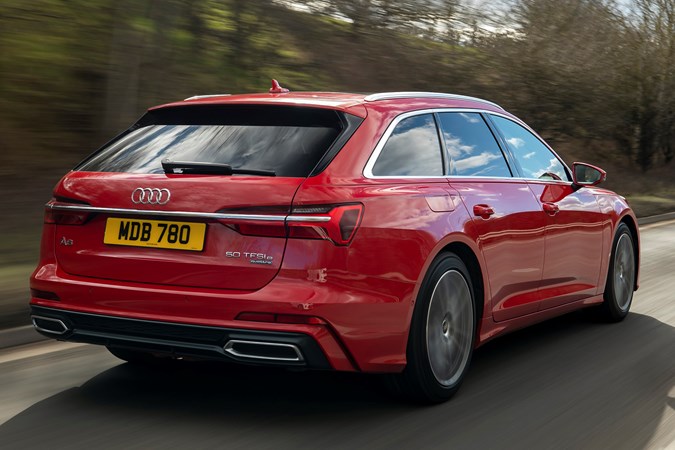
What’s it like to drive?
- Safe and predictable handling
- Not especially exciting
- Suspension choice makes a big difference
The A6 Avant fits between the Mercedes-Benz E-Class and BMW 5 Series in the way it drives. That’s to say it can’t match the supremely wafty comfort the Mercedes offers when specified with air suspension, nor can it involve the driver in the same way the BMW can. But it treads its own path very well, and is more than competent enough to satisfy most drivers.
On regular springs, but with adaptive suspension option ticked, the A6 handles itself very well. The ride is composed, there’s plenty of grip in corners. This is the optimum set-up for the A6. Try it without adaptove dampers, and in lowered S Line form, and it’s disappointingly firm and bouncy on typical B-raods. Even on the motorway, it doesn’t settle down particularly.
Air suspension can be specified as an optional extra, as well as all-wheel steering, and if you can run to it, we’d recommend it. It’s a bit of a mixed bag when it comes to ride quality, at least if you specify the A6 with large alloy wheels. It never manages to feel as cossetting and supple as an E-Class, feeling comfortable enough over some rough surfaces but then thudding into larger bumps in the road. But on the whole it works well.
The all-wheel steering works well to make the A6 feel much more agile than you’d expect of such a large car, by turning the rear wheels slightly opposite to the front wheels at lower speeds, requiring less input from the driver and making the A6 feel more nimble around town. At higher speeds, the rear wheels move in the same direction as the front ones to improve stability.
Although it comes across as a bit po-faced, you can have some fun in the A6 Avant. Bodyroll – overall – is well contained, again feeling more composed with the adaptive damping system specified, and in Dynamic mode, it’s actually quite good fun once you get used to its size and weight. But if it’s a driver’s car you want – take a 5 Series.


